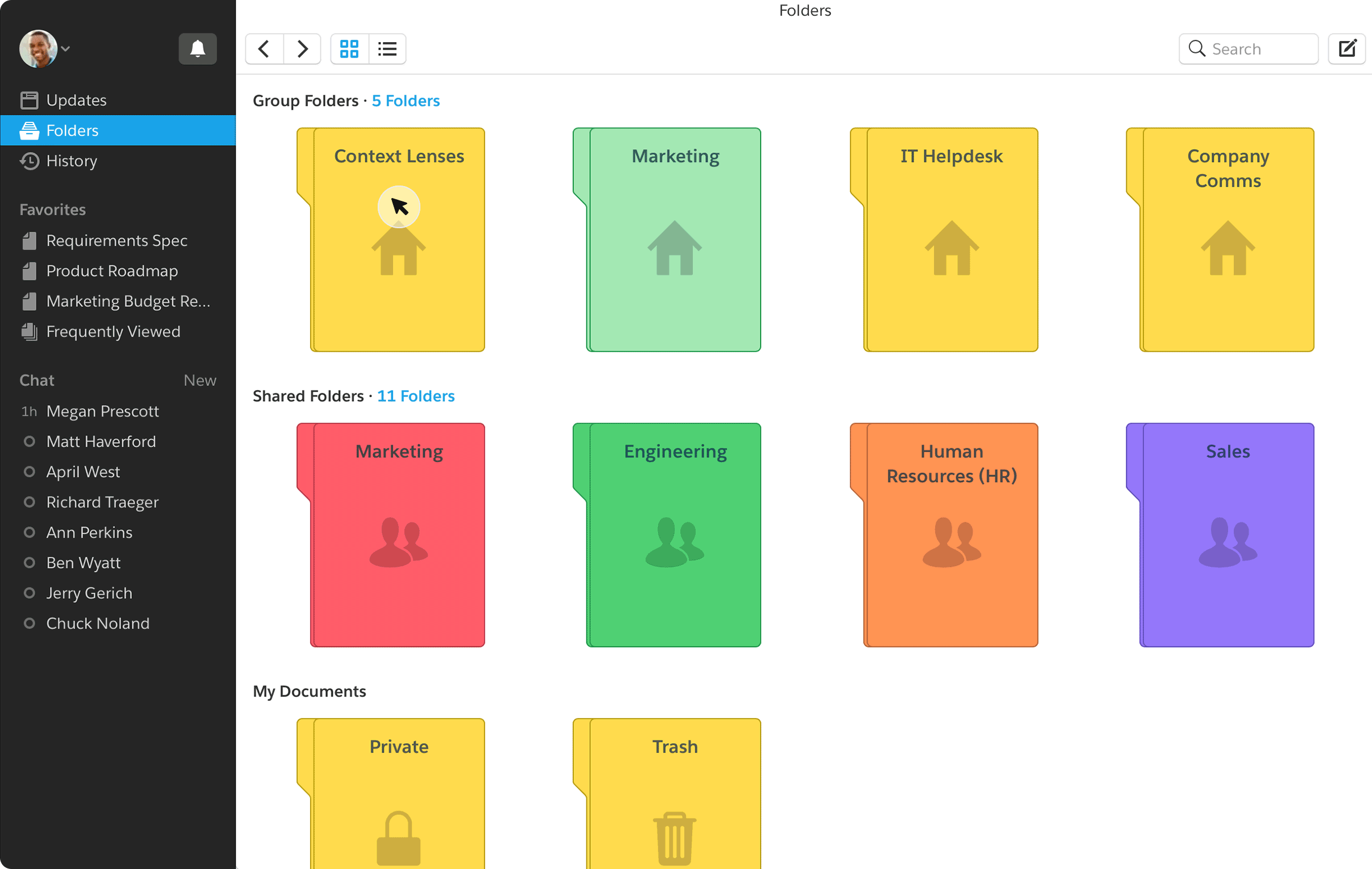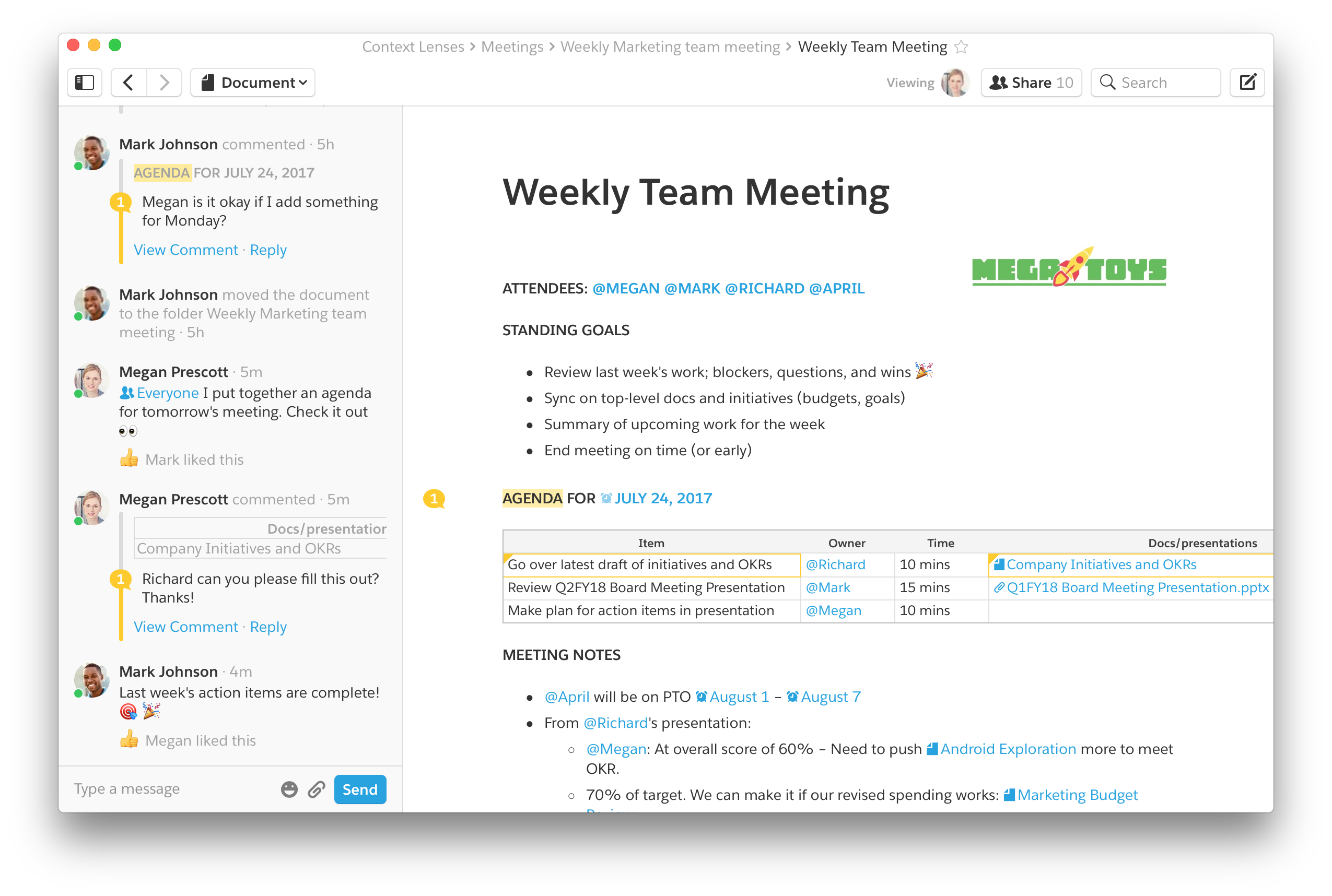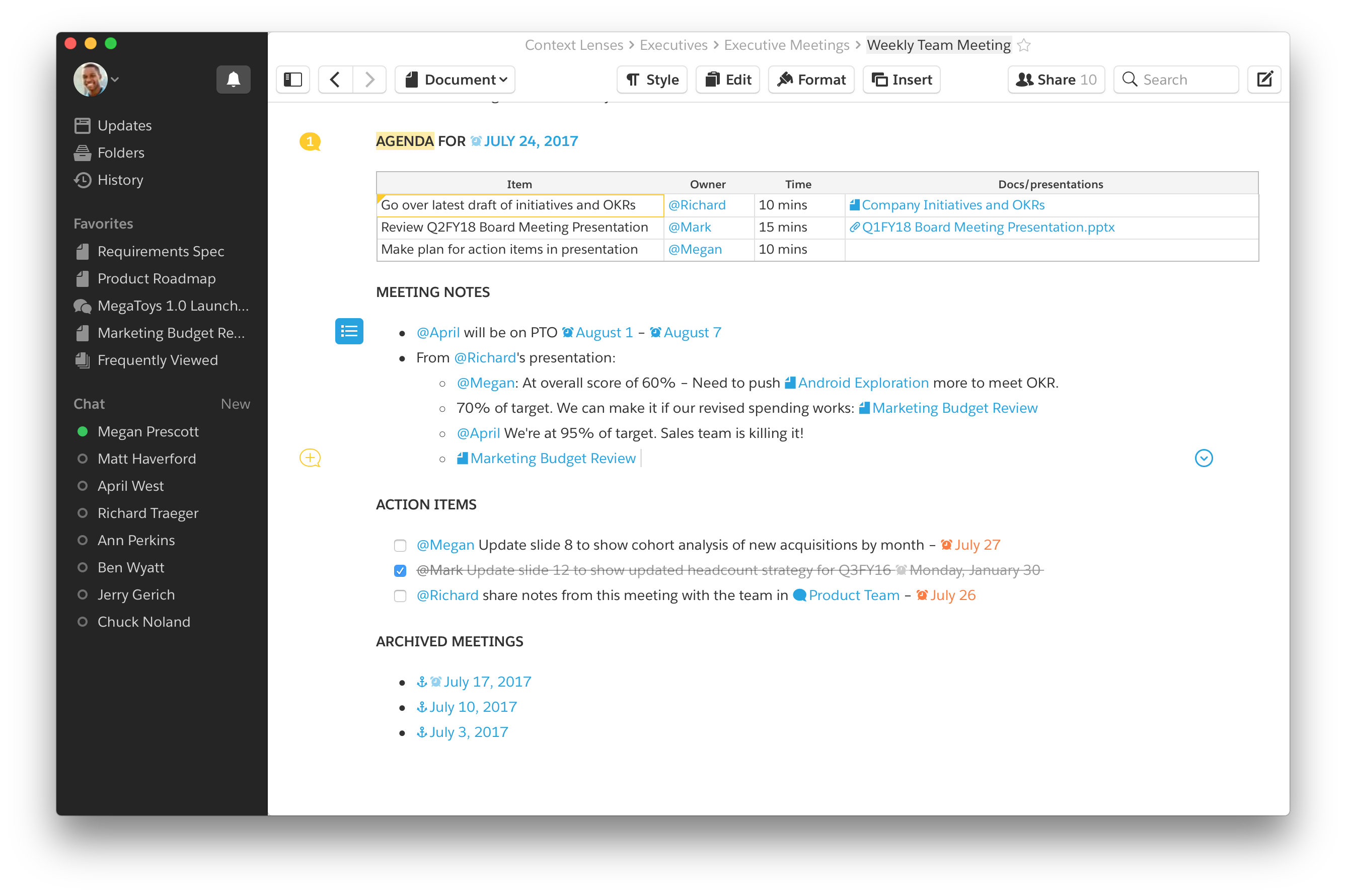3 ways to have better meetings with Quip

Let’s talk about meetings. Some of us spend up to 50% of our time in meetings — but despite their ubiquity, they somehow remain one of the most loathed forms of work on the planet. They don’t start on time; people randomly decide not to show up; there’s no focus or clear plan of action; and worst of all, everyone leaves the room and nothing ever comes of the time that was spent in the meeting. Can’t this be fixed?
Yes, but not overnight. Not all meetings need to happen in the first place — as evidenced by the fact that Quip users go to fewer meetings than they used to. But Quip can also help you make huge improvements to the meetings that do have to happen. Here's how.
Set the meeting up for success
The first key to a good meeting is organization. This is especially true for recurring meetings, like Monday morning planning sessions. If your meeting is chaotic and unproductive, people will start to zone out — or worse, skip the meetings entirely. To get organized, make a shared folder called Meetings, then sub-folders of standing meetings. Share these with the team, and communicate that this is where all meeting-related docs go: agendas, notes, slide decks, and anything else you want your attendees to have quick access to.

Pro tip: Did you know documents can live in more than one folder? If your company OKRs belong in the Executives folder, then by all means, store them there. But you can also put that doc in the team meeting folder so everyone can quickly find it to prepare for the meeting. Just use the Document menu, then choose Move to Folder followed by Add to Multiple Folders.
Keep things transparent and on track
Now it’s time to create a few documents that will keep your meetings from going off the rails. Start with an agenda document, and put the meeting’s purpose, goals, and stakeholders at the top. Put the date and agenda below, and consider adding the number of minutes each topic or presenter is allotted. It seems extreme at first, but trust us — it works wonders. Since Quip is a collaborative canvas, team members can add their own agenda items too, or comment on how the agenda is shaping up.

This is also a great place to put meeting notes. If they’re always in the same place, team members who missed the meeting can still catch up, and even put comments in the doc to contribute after the fact. And if this is a running meeting, you can use anchor links to organize old agendas and notes — this keeps your document tidy, but still has all the necessary information.
Add some accountability to those action items
How many times have you been in a meeting where everyone's “action items” never really happened? This is most likely because one person took those notes, and then either failed to share them, or shared them in a way that caused them to just get immediately lost and forgotten bout (ahem, e-mail). Jot those action items down in Quip document instead. Put them right in the meeting agenda, and assign responsibility and due dates with @ mentions and reminders. When items are due, your team will get alerts right in Quip, where they're already doing the rest of their work.

While there's no feature yet in Quip that will make your teammates show up on time, or not bring stinky food to the meeting, we do think the above tips can help your meetings become infinitely better.
Get started today
Try Quip with your team now — create a free site in minutes.
